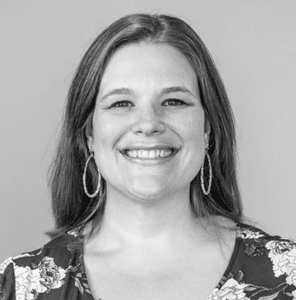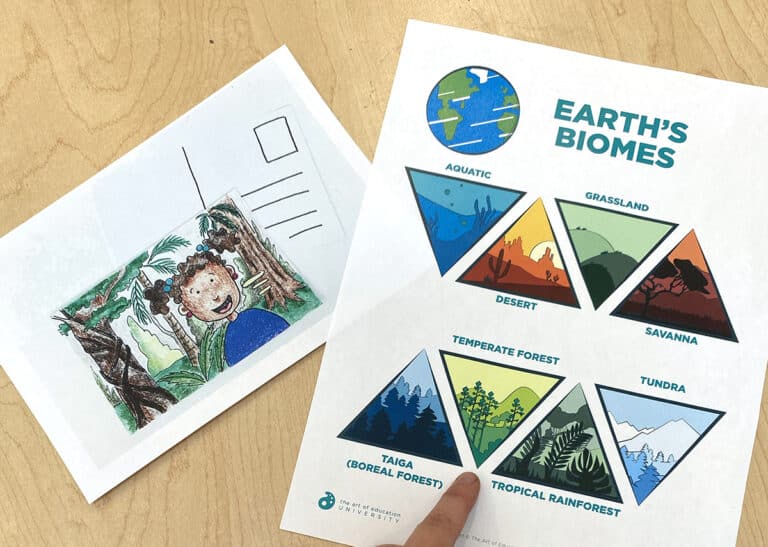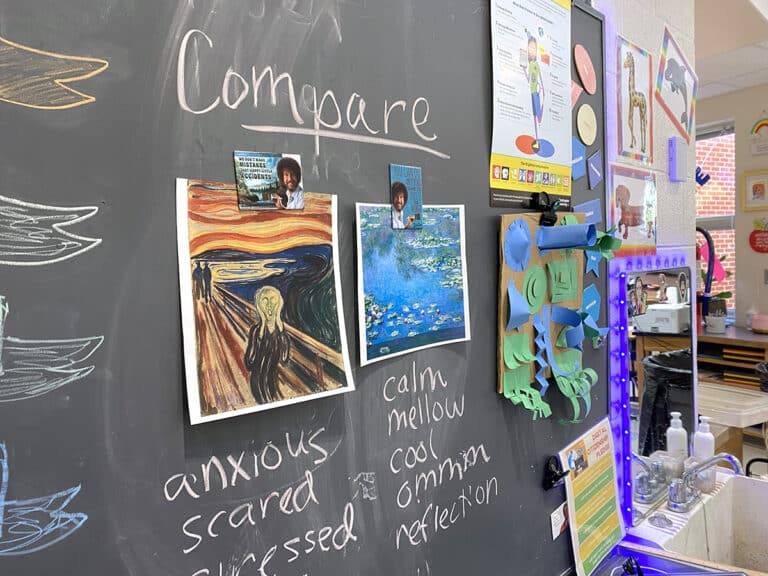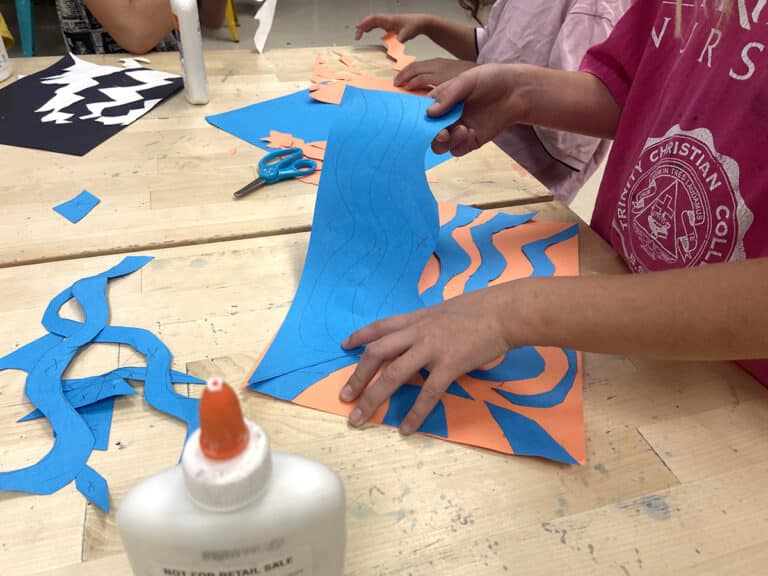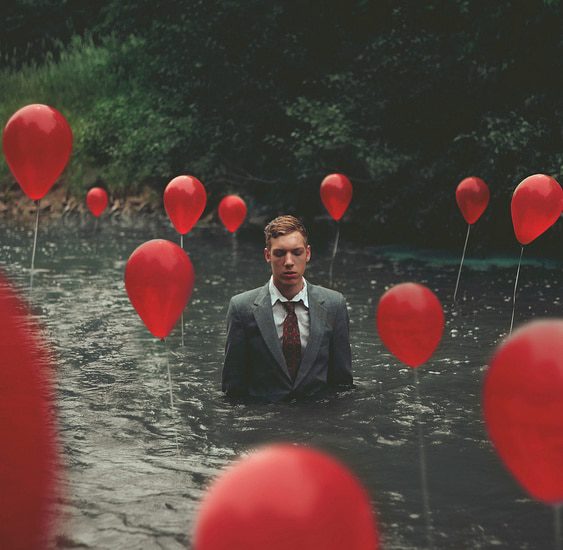Art and activism are a powerful combination. In the book, Seeing Power: Art and Activism in the 21st Century, art critic Nato Thompson observes that merging art and activism has the power to transform people’s relationships with the world around them. Recognizing this, art educators and community artists engaged in social practice called for social justice curriculum during the last decade in the form of articles, conferences, and texts such as Art Education for Social Justice and Art and Social Justice Education: Culture as Creative Commons.
Social justice-oriented approaches to curriculum challenge us to critically examine the distribution of opportunities and privileges in our communities and society as a whole. Recent polarizing political dialogue further highlights the need for this kind of art curriculum with the potential to help students develop empathy, become well-informed, and engage in substantive dialogue.
As art educators, we have the unique knowledge and skillsets to engage students in these conversations. Consider taking the principles of interpreting art further by including at least one lesson with an artwork that helps students learn to engage and respectfully persist through brave conversations. This is one way students can develop enduring understandings under the “connecting” category in the National Core Art Standards.
While many organizations use the term “brave conversations” (e.g., National Museum of African American History & Culture; Brave Coalition), it is important to emphasize some of the following understandings:
- Brave conversations are indeed difficult. Sometimes they cause discomfort that participants need to sit with. (Note: discomfort is different than harm).
- Missteps will likely be made during a brave conversation; participants need to act with and assume good intentions.
- Brave conversations work best when participants are focused and genuinely curious.
- Participants in brave conversations need to speak with respect and listen to understand.
- At the same time, do not assume anyone in the group is willing or able to speak on behalf of a group with which they identify.
If you anticipate a conversation could benefit from a guest discussant or two, invite them—even as virtual participants. Multiple points of view can enrich conversations about art.
4 Artists Whose Work Can Inspire Brave Conversations
Here are four award-winning artists working in a range of media as they engage with current issues and lived experience. Their works are excellent starting points for brave conversations.
Jason Garcia
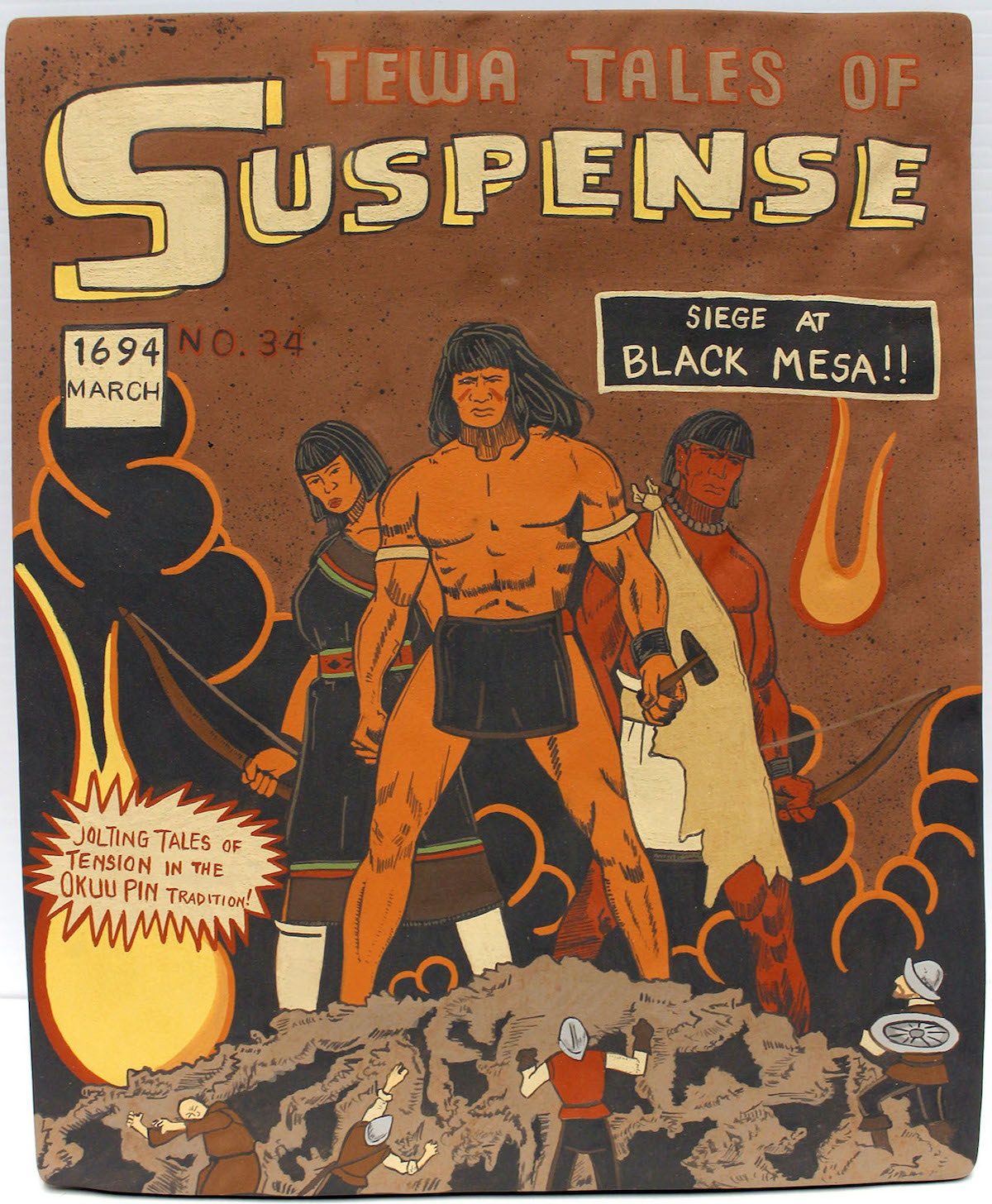
2010, https://www.cabq.gov/culturalservices/albuquerque-museum/seven-generations-of-red-power-in-new-mexico/generations-past/tewa-tales
Jason Garcia/Okuu Pin is a Tewa artist from the Santa Clara Pueblo in New Mexico. He is well-known for the scenes painted on his ceramic works created in traditional Pueblo methods. Garcia uses imagery from comic books and video games to make troubling history, such as that of the 1680 Pueblo Revolt, come to life for viewers—especially young people. As Will Hansen and Analú María López of the Newberry Library explain, “His bold take on the protagonists of the Revolt as ‘superheroes,’ fighting for truth, justice, and the Pueblo way offers an important corrective to the imbalance in the historical record.”
Lois Bielefeld
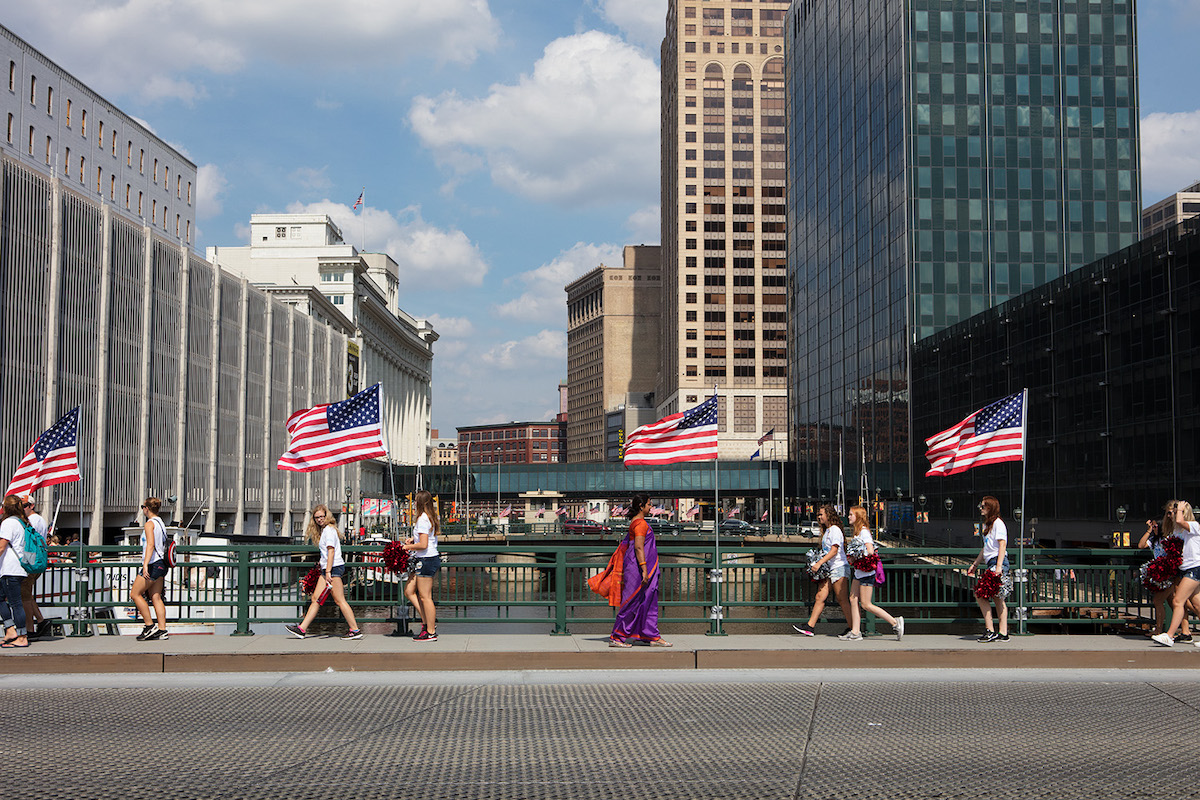
Lois Bielefeld is a photographer based in Chicago, Illinois. She focuses on portraits that “capture the personal connections and human qualities we all share.” A very accessible series through which she does this is Weeknight Dinners. In a statement about the series on her website, Bielefeld explains, “My goal is to explore common rituals, habits, and spaces that nonetheless reveal individualistic details about our private selves.” Many art educators will also appreciate Bielefeld’s collaboration with artist Nirmal Raja, entitled On Belonging, which “examines costumes and our understanding of race.”
Favianna Rodriguez
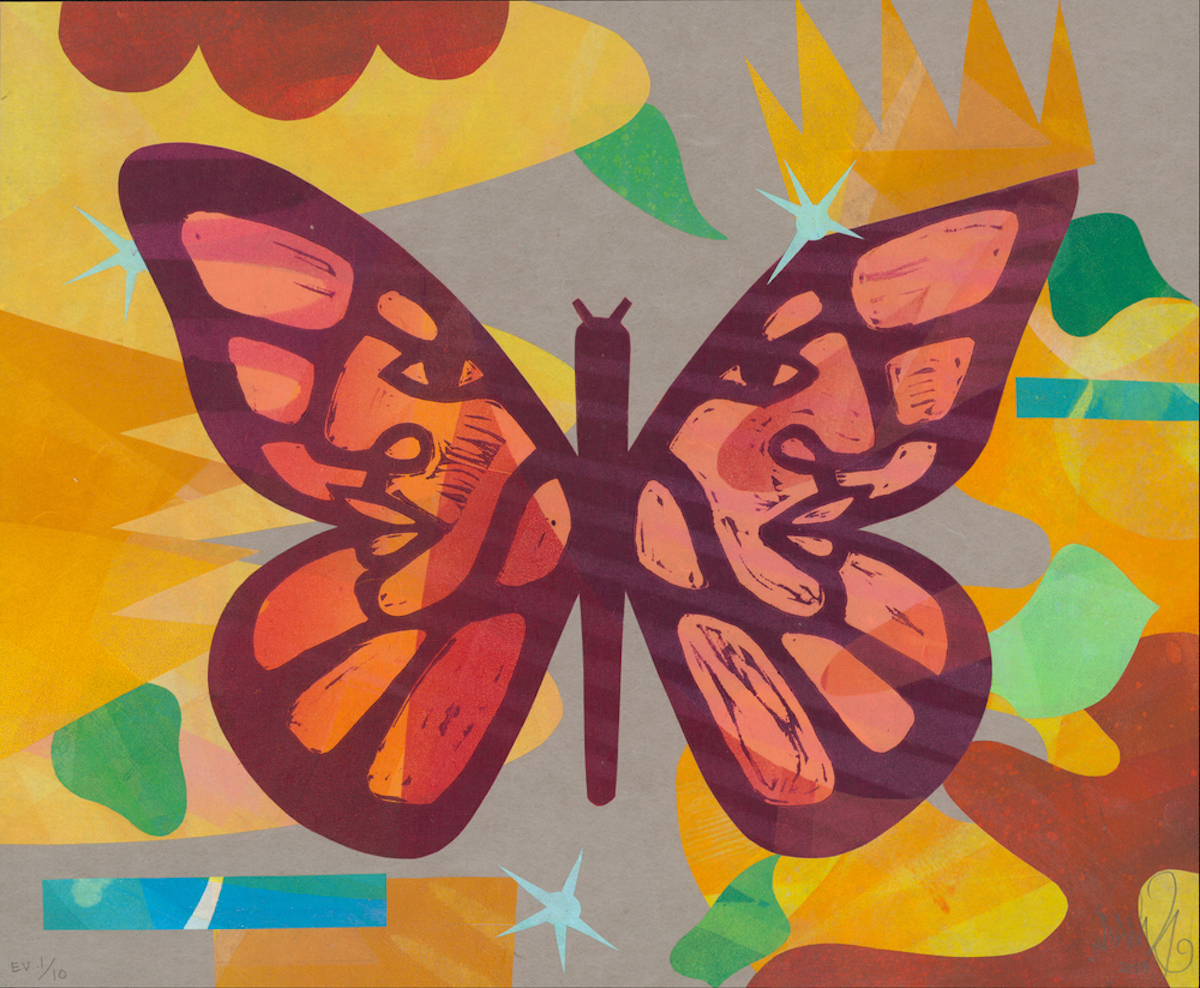
Favianna Rodriguez is an interdisciplinary artist, cultural organizer, and activist in Oakland, California. In her biography, she explains that she works with “myths, stories, and cultural practices of the present while healing from the wounds of the past.” As Abby Schukei points out in the article, 9 Printmakers You and Your Students Will Love, Rodrigez’s website includes images of vibrant, bold prints in her distinct style. Searching images by themes relating to many current issues like “social justice,” “activism,” and “immigration/migration” would be a great place to start. Rodriguez’s website also includes videos and downloads for teachers to use.
Bill Shannon
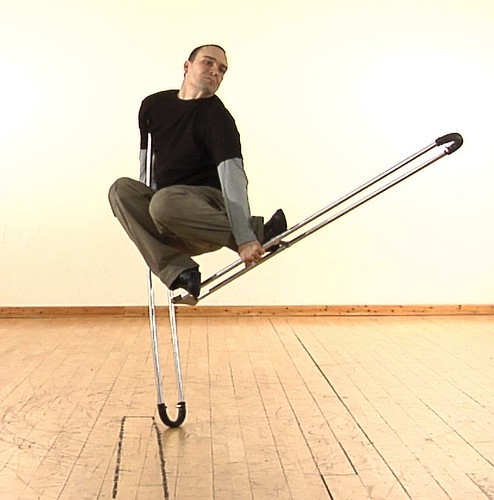
http://www.whatiswhat.com/media/shannon-technique
Bill Shannon is an interdisciplinary artist in New York City. His work is an excellent starting point for discussing disability, ableism, and the ways different bodies move through spaces. Shannon’s creative use of his crutches as a child grew into his own unique movements as a participant in skateboarding and hip-hop culture. Today, he is known worldwide for his unique breakdancing. Twenty years of his life as a performance artist are documented in Crutch. To quote Shannon, “Everybody has crutches. Some of them you can see, some of them are invisible.”
These artists and many others can offer support and inspiration as you engage students in brave conversations. As art educators, we are uniquely positioned to encourage students to examine and interact with the world around them. By examining the link between art and activism, we can help students widen their perspectives and make an impact on their relationships with the world.
Which artists have helped you learn about different perspectives?
What artists have stretched your thinking about the world?
Magazine articles and podcasts are opinions of professional education contributors and do not necessarily represent the position of the Art of Education University (AOEU) or its academic offerings. Contributors use terms in the way they are most often talked about in the scope of their educational experiences.

